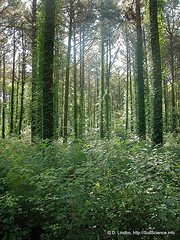Plan for Succession, not Just Bequeathing, of Your Private Land
By: Amos S. Eno
Posted on:07/27/2010Creating a succession plan is not the same as estate planning; think of it as designing your family legacy.
Imagine working all your life alongside your father, learning how to farm or sustainably manage your forest land and growing to love it. Like most kids, you don’t enjoy discussing what will happen to the land after your parents are gone. Then one day you become an “heir.” Your parents have tried to be fair by willing the land equally to you and your three siblings who live in distant cities. Unlike you, however, they have no interest in continuing to farm and decide to sell. Tragically, you are forced to sell too. You wind up with a job driving a truck, estranged from the rest of your family.
If this story doesn’t break your heart, you should stop reading right now. If this story gives you pause or makes you shiver with dread, then I have some good news. It’s called “Ties to the Land,” and it is one of those ideas that is so simple, yet so new, it has the potential to create a revolution in landowner legacy planning over the next several decades.
Why Focus on Intergenerational Transfer of Land?
One of the themes that we consistently emphasize here at the Private Landowner Network, or PLN, is that the time for focusing on private land conservation is now. According to a survey by the Pinchot Institute, here are just a few of the reasons why:
- Greater than one-half of private forestland owners are older than 65.
- Almost 80% say they want to keep land in the family but only 1/3 have involved their kids in the planning.
- More than 1/2 of the children of these landowners were not raised on the family forest or live far from the forests.
- Most lands are managed for recreation and wildlife values, but close to 3/4 of offspring desire income from the land in the form of timber harvest.
The Roots of Ties to the LandTies to the Land began as a grassroots workshop in 2004 led by a couple of master woodland managers in Oregon, C

lint Bentz and Susan Watkins. The material was highly relevant and instantly in demand. The program rapidly grew, bringing on as a partner OSU’s
Austin Family Business Program, or AFBP, the oldest academic family business program in the country.
Robin Klemm, AFBP director, says that talking about death and taxes are two of the most difficult things to do, and people often avoid it until it’s too late. “But going through the doors of the emergency room is no time to bring up planning for posterity.”
In 2009 the program got visionary funding from the
American Forest Foundation (Bob Simpson, Senior VP) to help the program go national. Thus was born Ties to the Land, or TTL. For the past year, TTL has been led by Mary Sisock, a trained forester. From the outset, Mary was drawn to the communication side of forestry because “It didn’t matter how much I knew if landowners didn’t call me.”
How Succession Planning Differs from Estate PlanningThe TTL website states that communication may be the difference between an estate plan, which directs the transfer of assets, and a
succession plan, which helps transfer from one generation to the next the vision, the passion and the skills needed to be stewards of the land. “Land,” says Mary, “is an heirloom asset, not easily divisible if you want to keep it working, so it takes a different kind of planning.”
TTL now sells a
workshop facilitation DVD and succession planning workbooks online. However, Mary emphasizes that the true value of the program comes from succession planning workshops where groups of 10 to 30 families can learn, listen to one another’s concerns, and hear their own stories validated. Here are the kinds of remarks Mary hears over and over after workshops that deal explicitly with difficult issues such as intergenerational differences, physical and mental health, and addiction:
- “I thought it was just me.”
- “Thank you, now I know I’m not alone.”
- “This is the first time that we have spoken about this as a family.”
Ma

ry’s message is “we want to let people know that different families have different needs, but the assumption that the inheritance of land must be divided among separate owners is false.” Many
alternatives exist, and they’re flexible. But it takes cooperation and communication, which Mary says “is the most basic form of cooperation.” That’s what TTL is all about.
Call
Ties to the Land at 800-859-7609 to find one of the workshops currently scheduled in 13 states, or even to help get one organized in your area. Tell them the
Private Landowner Network sent you. And please leave a comment if this program strikes a nerve!
 Sign In
Sign In
 Sign In
Sign In
